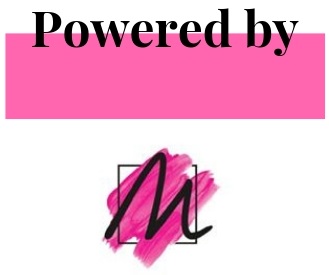Following fashion, a fast-paced industry that is ever-evolving and growing in South Africa, is difficult.
Following fashion as a model, well, that must be exhausting.
Male modelling in particular has been undergoing a dramatic shift, said a recent report in the UK’s The Independent.
It used to be the domain of underwear, dominated by muscled Adonises, but the landscape of casting is changing.
A seismic shift in the industry has seen a new breed of beauty replace underwear-clad hunks for a less conventional aesthetic – non-conformity is key.
But what is it that sets these boys apart from the chiselled buffs of yesteryear?
“We are really about finding people that can make an impact. They need an exciting personality, to be dynamic and to make a difference to the industry in some way,” said Aicha McKenzie, chief executive and director of AMCK Models London.
She cited Shaun Ross, an albino supermodel and humanitarian activist, who started a movement “inmyskiniwin” to empower people to love themselves as they are, no matter what.
“Shaun’s epic personality has seen him conquer his disabilities to appear on the cover of Vogue and shoot worldwide campaigns for Will.i.am with Kendall Jenner and Naomi Campbell.”
Talking to top figures in the world of fashion, we asked about the impact of trends, and what “must haves” models should have to make an impression here.
Femininity is “absolutely” valued as much as masculinity in the modelling industry, said Tiffany Prior, operating manager at ICE Model Management.
“On an international stage it always has been. Look at campaigns in the 1990s and 2000s, there has always been a mix.”
As an agent who has been in the industry for decades, Prior said: “Beauty is in the eye of the beholder, however, industry, designers and trends are what dictate what we see and should eventually like.
“South Africa has a commercial market,” said Prior. “Any model that is too edgy or editorial may find it difficult to work here.” However, she added: “The right model can be styled and photographed to work in most markets, should they have that ‘something special’.”
Height is still the number one consideration when looking for a model. “There are standard size guidelines which are very important to follow. If a model does not fit a sample size, they will not work,” said Prior.
It’s a fickle and fast-moving industry, Prior said. “It’s the public who follow fashion and not the other way around.”
Internationally recognised, multi-award-winning Durban designer Terrence Bray shared his thoughts on trends in the modelling industry.
“In menswear, the looks are going more Eurocentric and defined. Models are becoming gender neutral and more pretty boy-ish,” he said.
“As for women, I’ve noticed the opposite. Masculine features and boyish looks in girls are much more appreciated than before,” said Bray.
Balance is key for models. “We look for people with well proportioned features and body shape as well as someone who embodies the spirit of the collection,” he said.
“The buzzword is gender fluidity and a gender free society,” said founder and head designer at Zarth, Zama Mathe.
For Mathe, it’s not about the body you were born in.
“Gender is just a biological term that refers to a physical attribution and should not be the basis for identity or personality. This idea of a genderless society has given people the motivation to live their lives in a way that is true and real to them; to have the freedom to feel and look masculine or feminine whenever they choose and not be limited by societal rules,” she said.
With fashion being highly influential, Mathe is grateful for the role it plays in today’s society. “We are glad the fashion industry is a pioneer in this notion; including models who are gender ambiguous.”
Social media means there’s more room for the unconventional on runways.
“The rise in its usage shows we are more alike than we think, we have the same fears and dreams; and I think that has increased people’s accep- tance of people who’re different to them. Secondly, the saturation of pop culture via popular apps like Instagram and the pop culture icons like the Kardashians means industries like fashion are constantly on the lookout for something new and peculiar,” she said.
It seems as though all the rules have been thrown out. “Today’s models are indivi- duals who are someone’s sister, mother, wife and friend.
“Uniqueness is celebrated, whether it be androgyny, dimples, vitiligo (a skin disorder) or melanin, and, of course, a great personality,” Mathe said.
“Female beauty is bravery, strength, and intelligence. Women are no longer meek and submissive, they are capable, ambitious and hard-working. The models chosen for big fashion brand campaigns, or who open shows, are ladies who have a strong and distinctive personal brand. They should have a brand that sets them apart from every other model because they get hired based on their assumed brand net worth,” said Mathe.
Keeley Mayhew, a model at Glamour SA Models, knows first hand what it takes to be in the industry. “I feel my look fits into the modelling industry because I am tall and slim and can adapt to the type of work I’m asked to do,” said Mayhew.
“I’ve noticed male models have become more androgynous. There’s a shift towards curvier models which allows more models across the board to enter the industry. Also, there’s a trend towards highlighting models’ imperfections,” said Mayhew.
The industry has its ups and downs, said Mayhew.
“The worst part is the agents can be quite critical, so you need to learn not to take it personally.”








